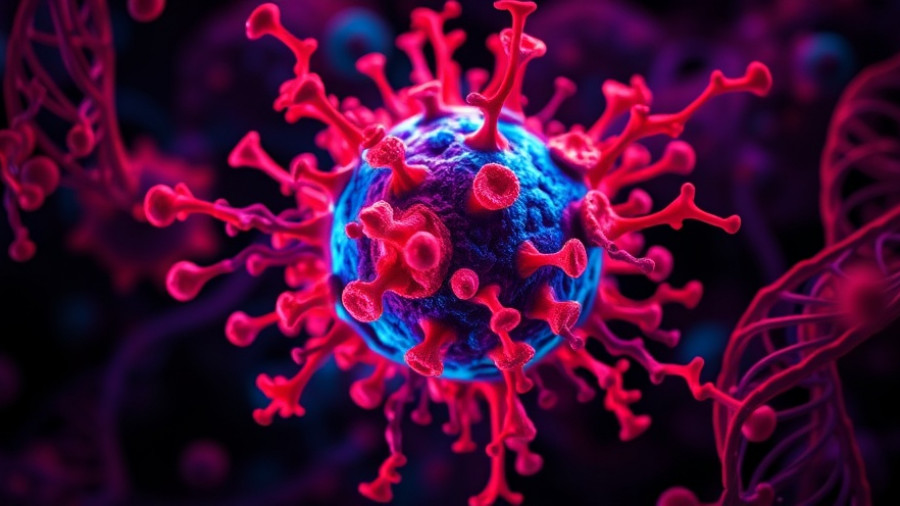
The Discovery of Cancer's 'Engine Rooms'
Recent research from Texas A&M University has unveiled a groundbreaking understanding of a rare and aggressive form of kidney cancer known as translocation renal cell carcinoma (tRCC). This discovery focuses on the unique role of RNA in constructing internal "droplet hubs" within cancer cells that effectively accelerate tumor growth. It draws an exciting parallel to the collaborative spirit seen in coworking spaces of cities, but in a significantly more detrimental context.
How RNA Fuels Tumor Growth
In the study, scientists reveal that RNA, a molecule often recognized solely for its role in conveying genetic information, can take on a far more active function within cancer cells. The RNA forms structures known as droplets that cluster essential proteins and molecules that activate growth-related genes, essentially hijacking the cellular machinery to foster malignancy. This dramatic shift in our understanding presents RNA as not just a messenger but as a fundamental architect of cancer's progression.
Breaking Down Cancer's Mechanism
The researchers have leveraged a combination of advanced molecular biology tools to chart this process, including CRISPR gene editing and innovative sequencing techniques. This meticulous investigation has led to striking findings regarding the formation of TFE3 oncofusions – abnormal gene combinations that contribute significantly to the aggressiveness of tRCC.
One of the key discoveries is the role of an RNA-binding protein named PSPC1, which stabilizes the droplet hubs, enhancing their capacity to drive tumor growth. The team's findings not only clarify the mechanics of this oncogenic interpreter but present new avenues for targeted therapies, addressing a cancer type that predominantly affects children and young adults.Turning Off the Tumor’s Power
What's perhaps most thrilling about this research is the team’s development of a molecular switch capable of dissolving these harmful droplets, effectively cutting off the ‘engine’ that powers the tumor. Upon application, this innovative tool has halted growth in both lab-grown cancer cells and mouse models. As lead researcher Yun Huang notes, this discovery offers a fresh perspective for precision treatment methods, showcasing the potential to create therapies that are not only more effective but also less toxic than conventional treatments.
Broader Implications for Cancer Treatment
The implications of these findings stretch far beyond just tRCC. Many pediatric cancers driven by fusion proteins could benefit from this approach, as the ability to disrupt malignant behavior at the source opens the door to novel therapeutic strategies. As pediatric cancers remain areas of urgent need, developments like these bring a renewed sense of hope for young patients facing fierce battles against aggressive diseases.
Conclusion
The insights gained from the study encourage us to rethink our approach to cancer treatment, particularly in rare forms that defy our traditional understanding of malignancies. Just as halting collaboration in a coworking hub puts a stop to all progress there, disrupting the droplet structures built by RNA could spell a significant shift in the fight against cancer.
To learn more about how molecular biology can pave the way for innovative cancer treatments, keep your eyes on the latest research and advances in this rapidly evolving field.
 Add Row
Add Row  Add
Add 




Write A Comment